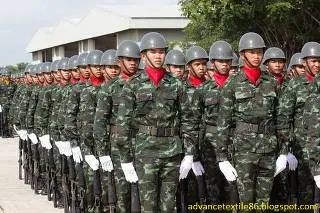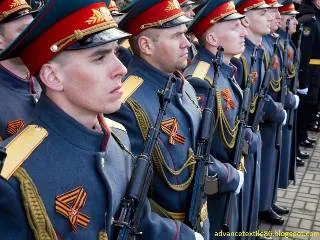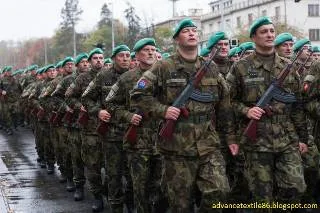Army Service Uniform
Army
Service Uniform (ASU) is a military uniform worn by members of the United
States military in situations where business attire is called for. It can be
worn in most public and official activities as an analog for civilian business
attire. Army combat uniforms are used in combat situations. The Green Uniform
is a daily service uniform for all soldiers and the current Army Service
Uniform (ASU) will serve for the occasion require for more formal attire.
Currently, the Army and Air Force each have one uniform, the Marine Corps has
two uniforms and the Navy has three uniforms.
In
the early days of the U.S. military, uniforms worn in combat were essentially
the same as everyday duties, as was the case with most of the military at the
time. This changed in modern times, as field uniforms were developed that were
more suitable for combat.
Army
Service Uniforms were relatively simple during the Civil War. Typically, the
same uniform served as a garrison uniform and a combat uniform. Soldiers of the
American Civil War wore a standard dark blue uniform, similar to those in
garrisons or military offices and headquarters. Uniform standards were relaxed
during the war years, especially in a campaign, as the conditions demanded.
Army Service Uniform History
The
1899 Army Service Uniform laws provided a cotton khaki uniform for field
service and the knowledge of the Spanish American War when both blue and khaki
were worn. From 1902 to 1917 the army was three uniforms such as a service
uniform produced of olive drab wool cloth for use by soldiers on the field, a
khaki cotton form used for hot weather, a blue uniform used for ceremony,
and post-dress men listed later. Blue uniforms were dropped in 1917 as a result
of the First World War.
The former stand collar service coat was replaced by an open collar coat worn with
a collared shirt and tie in 1926 and saw the replacement of breeches with
straight-legged trousers in 1937. Dark blue clothing and light blue trouser
uniforms were reintroduced in 1937 in the form of modernization for officers.
A
summer army service uniform of trousers and khaki cotton shirts was issued, but
the herringbone twill utility uniform became the uniform of choice for the warm
weather field and was used only for garrison wear. These uniforms were usable
throughout the Korean War.
In the mid-1950s, blue uniforms were reintroduced as an alternative to uniformed
soldiers. A white dress uniform worn in the early twentieth century was also
redesigned but rarely used, as it was only necessary for officers in the
tropics.
On
Veterans Day 2018, the Army declared that a new Green Army Service Uniform,
based on the service uniforms of the popular Pinks and Greens officers wore in
World War II and the Korean War, would be proposed as a daily service uniform
for all levels starting in 2020. The uniform begins to be available to soldiers
in mid-2020. The Army Blue service uniform goes back to its previous use as a
formal clothing uniform.
Army Service Uniform description
1. Blue Army service uniforms
Blue
Army service uniforms include a midnight blue dress after light blue trousers
for male soldiers and a midnight blue dress after a light blue slack or
midnight blue skirt for female soldiers. Non-commissioned and commissioned
officers' trousers/slacks include gold braided stripes on the outside of the
leg. Generals wear midnight blue trousers/slacks with gold bread instead of the
light blue used on the lower level. The blue army service uniform is worn after
a white shirt, a black four-sleeved neck for men or a black neck tab for women,
and black leather shoes. The headwear includes a matching service cap with the
color of the hatband or branch-off-service of the beret, unless the soldier is
allowed a certain color beret, black remains the default color. The listed rank
is also indicated by Chevron on the upper arm, while the officer rank is
indicated by a passed shoulder strap with a branch-of-service color backing.
War boots and organizational items, such as brassards, military police
accessories, or individual unit engines are not worn when used as formal
attire. In the evening when the blue army service uniform is worn for social
events, men can wear a black bow without a black four-sleeved neck, and
commanders can instruct that headwear is not necessary.
2. Green Army Service uniforms
Green
Army Service uniforms are included a dark olive drab four-pocket coat with a
belt, khaki shirt, olive tie, drab trousers, and brown leather oxfords for both
men and women, instead of women wearing pencil skirts and pumps. The headwear
includes an olive garrison cap or an olive pick service cap with a brown visor;
Units with flavored colored berets continue to wear them. The rank listed is
indicated by the Chevron worn on the upper arm, and the officer rank is
indicated by the pins on the shoulder straps.
In
1954, they introduced a new, all-ranks, Army Green shade 44 "Class A"
Army service uniform. The Army evaluated different ideas in the late 1940s to
make a distinctive uniform. After World War II, the excessive use of surplus
clothing led many civilian workers to mistake military personnel. Blue was
considered acceptable for men's clothing, but it was difficult to distinguish
it from Air Force and Navy service uniforms. The green color was adopted to
provide color with a different military presence from different uniforms of
civil service personnel. Originally worn with a tan shirt, the shirt went pale
green-gray in 1979. The tan uniform is a short-sleeved shirt worn with a "Class
B" uniform and no tie. The Tan "Class B" uniform was phased out
in the 1980s when the Green Army Service uniform with a short-sleeve shirt
became the standard Class B uniform.











0 Comments